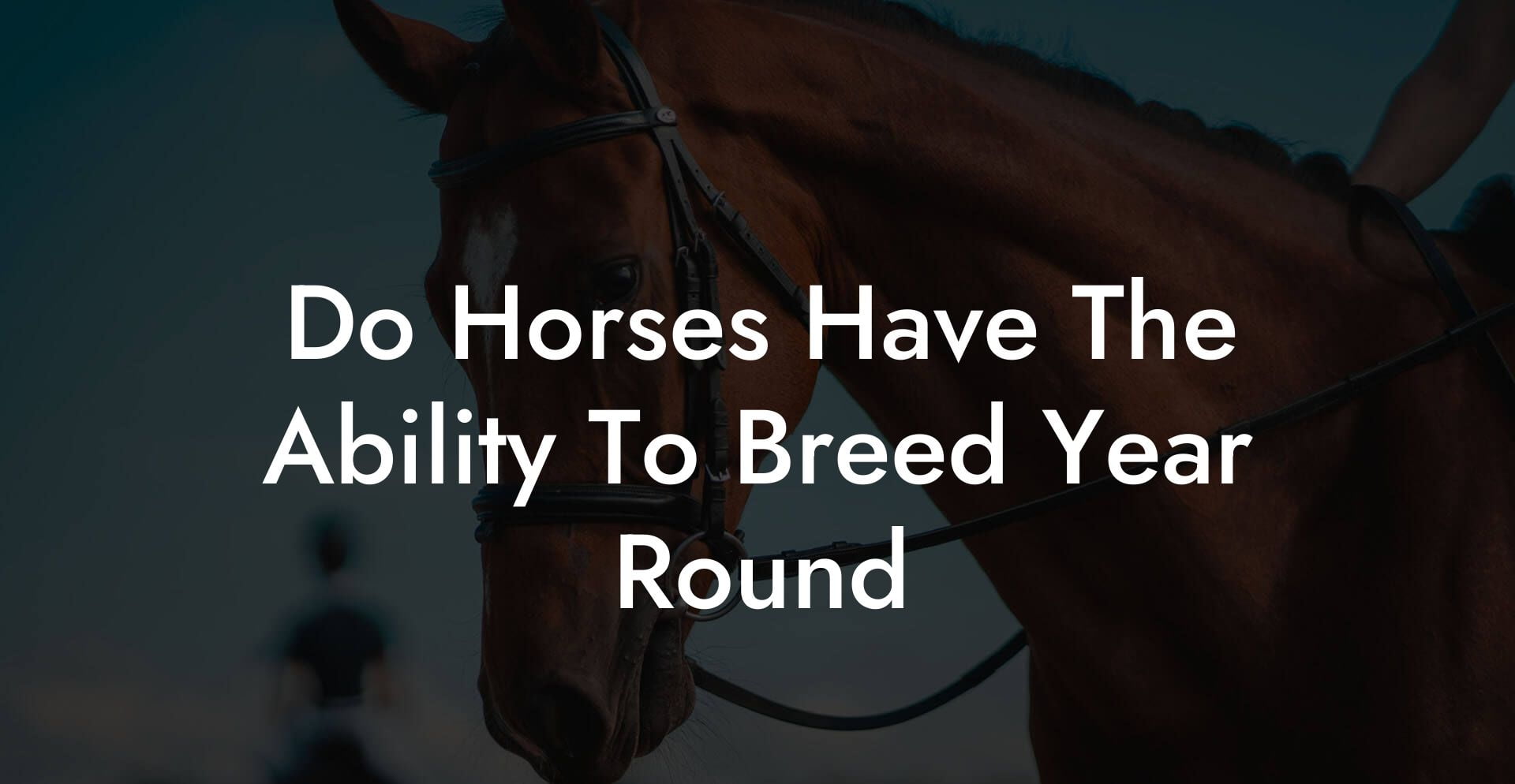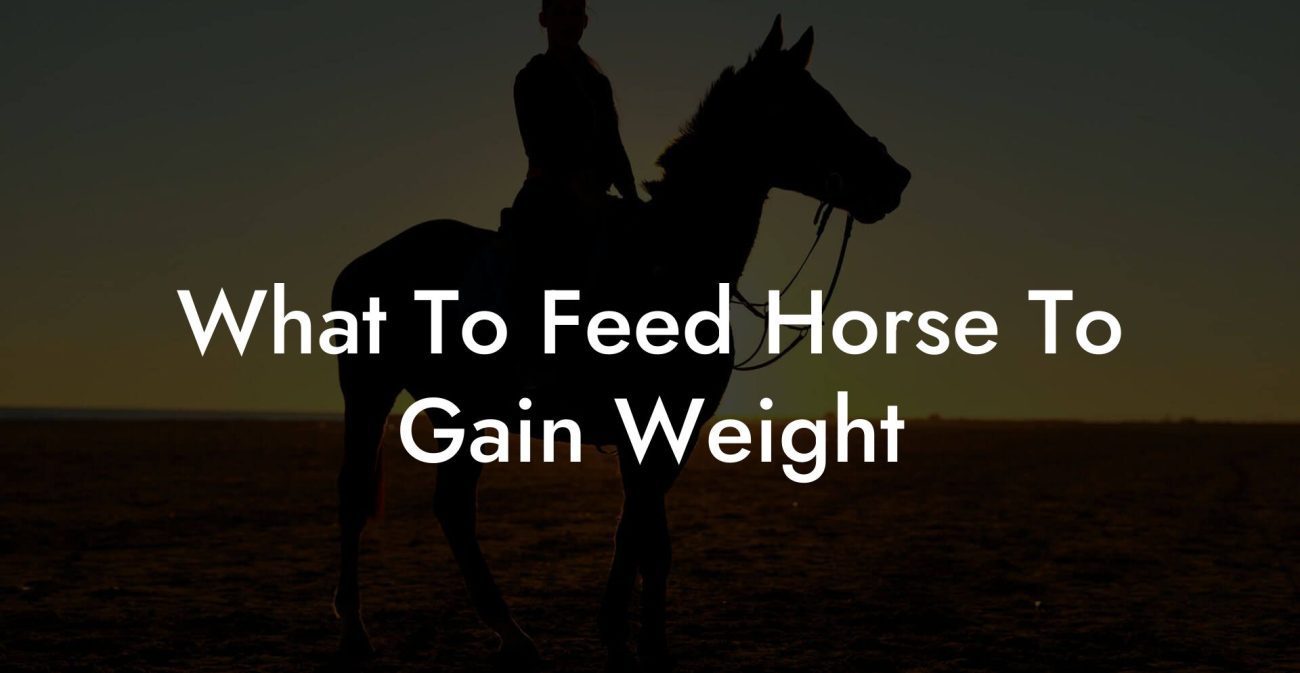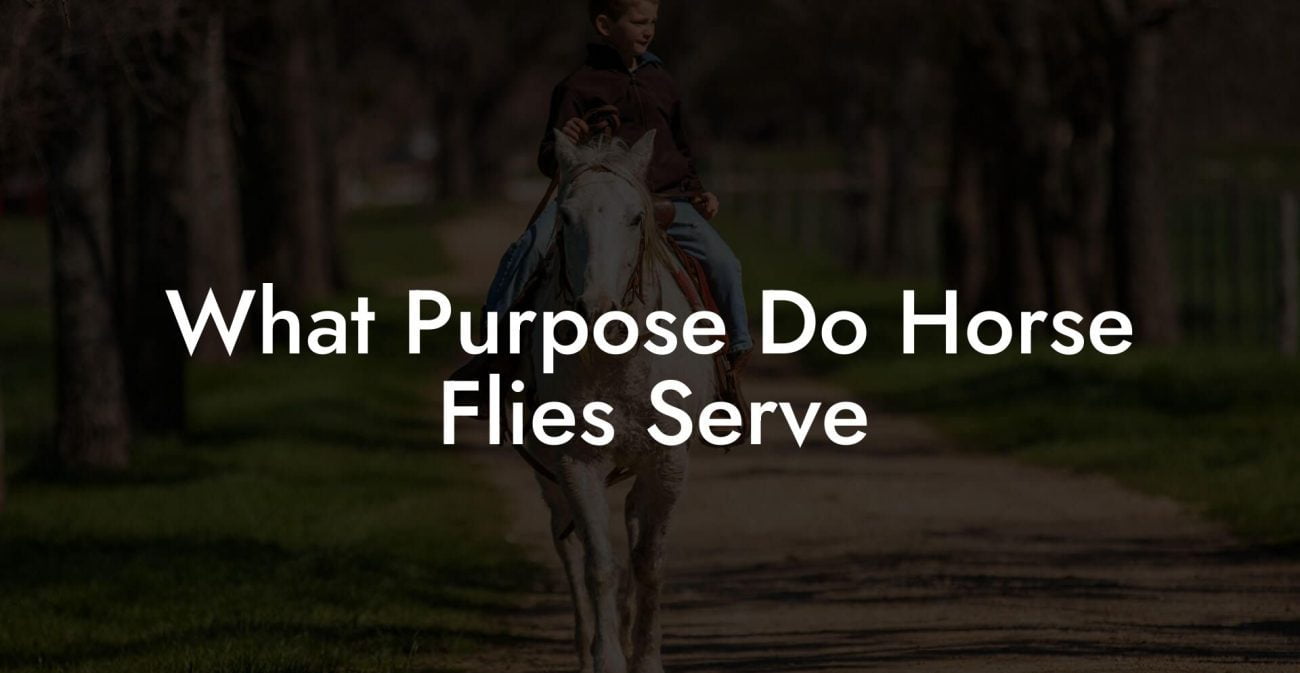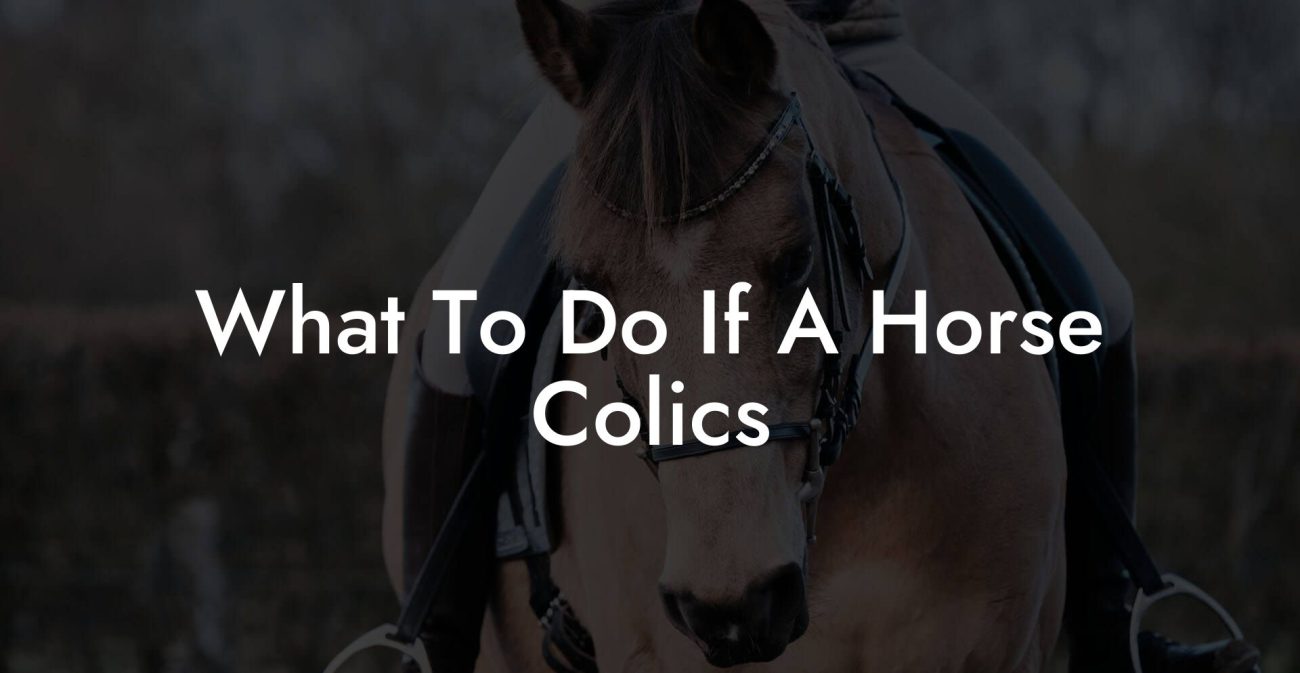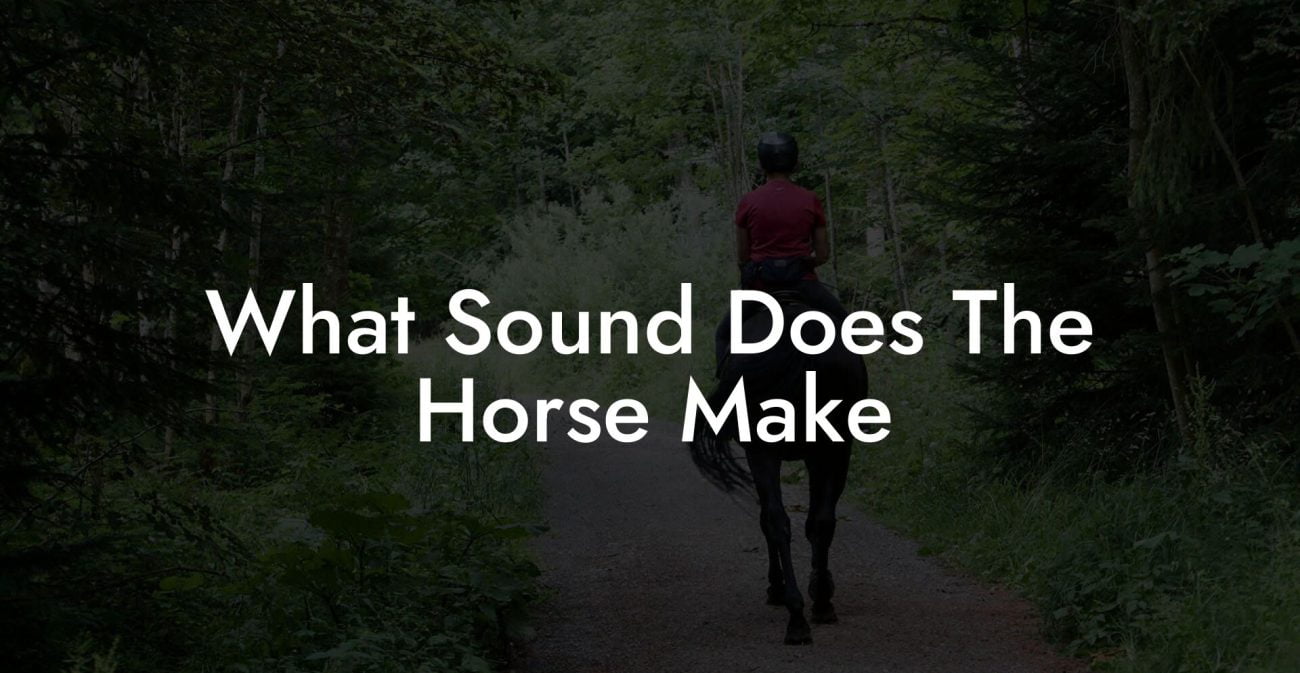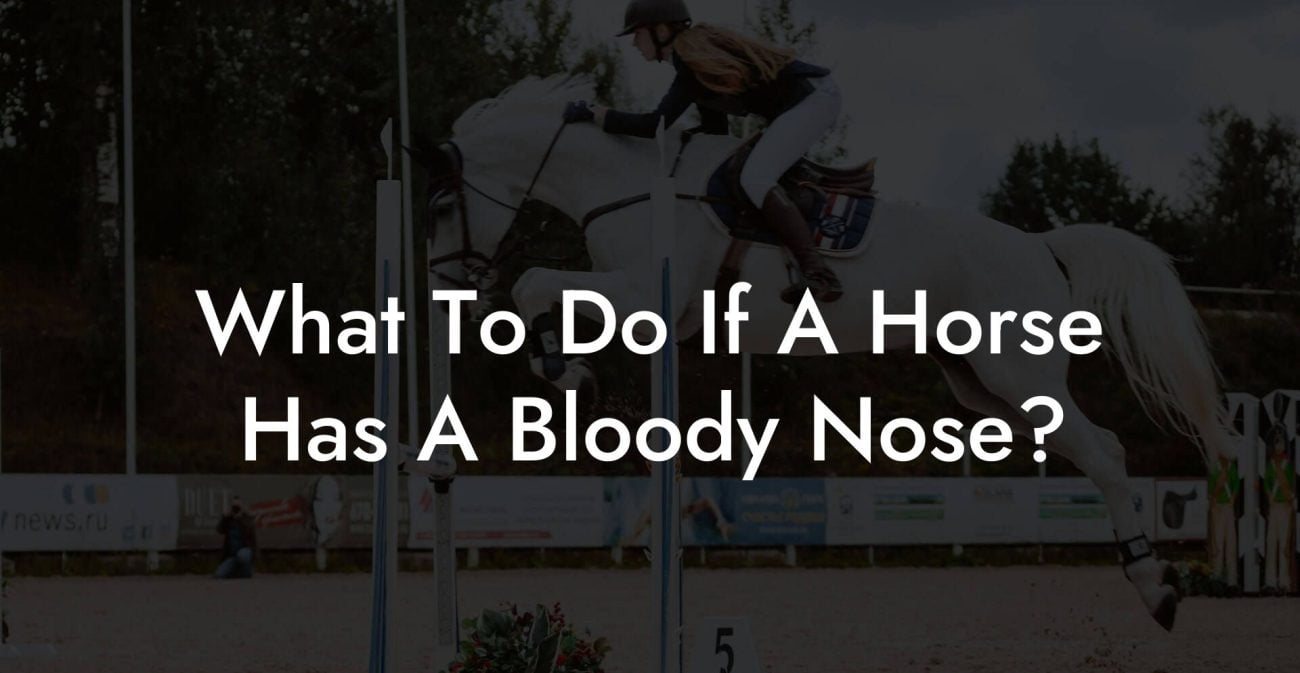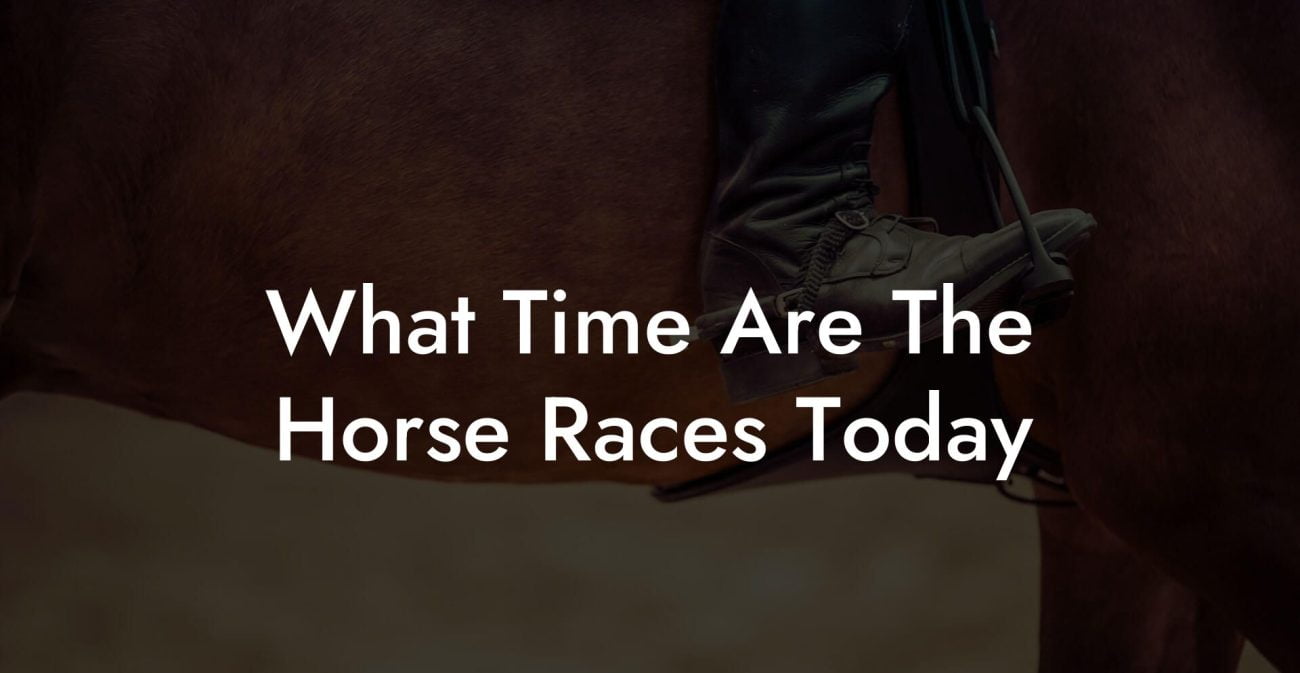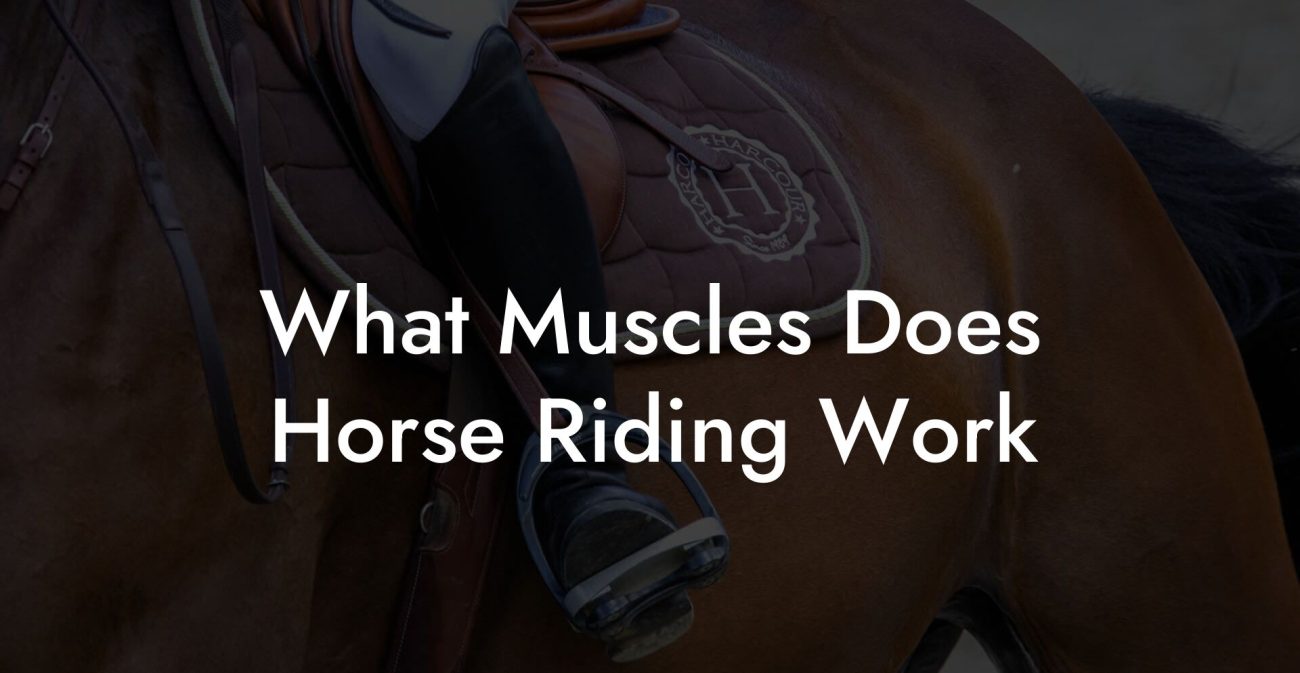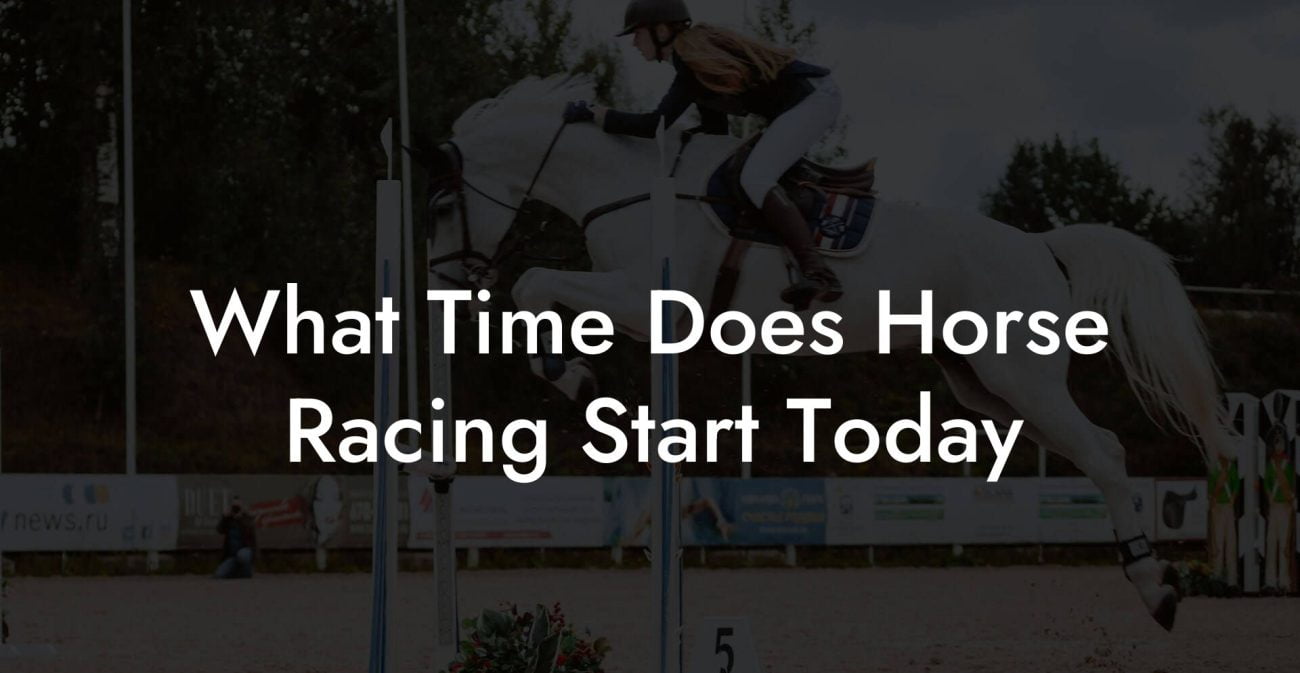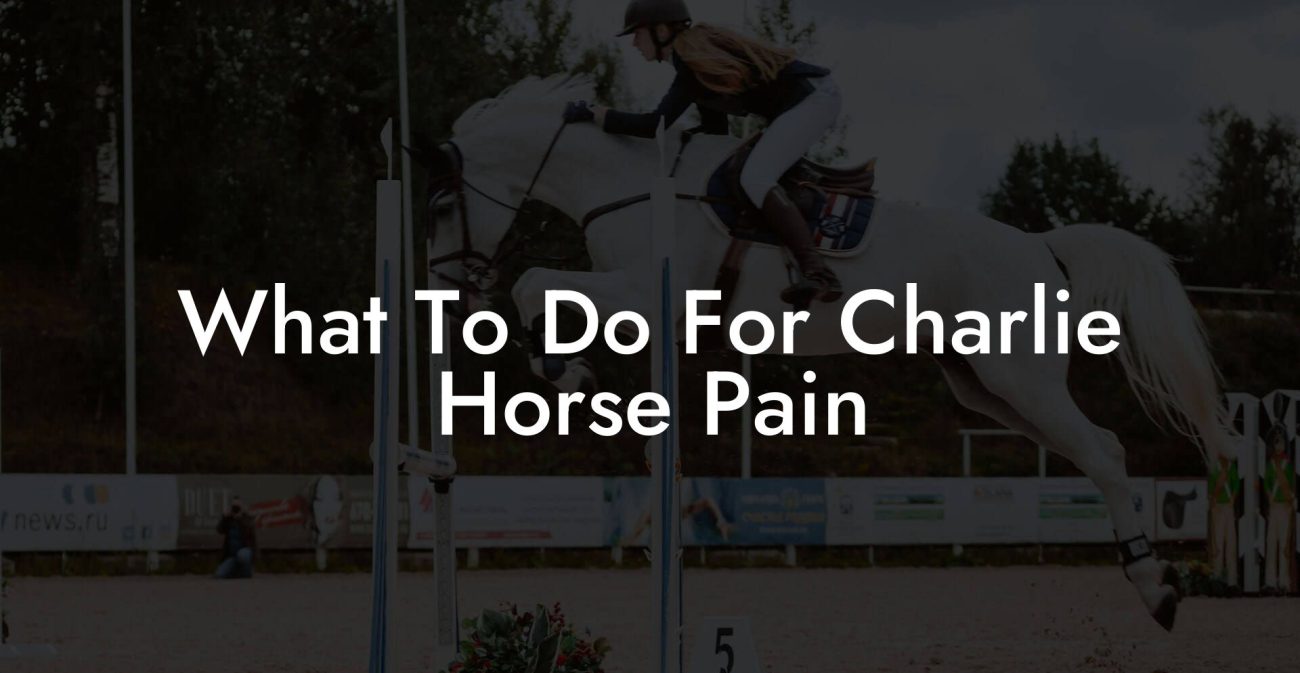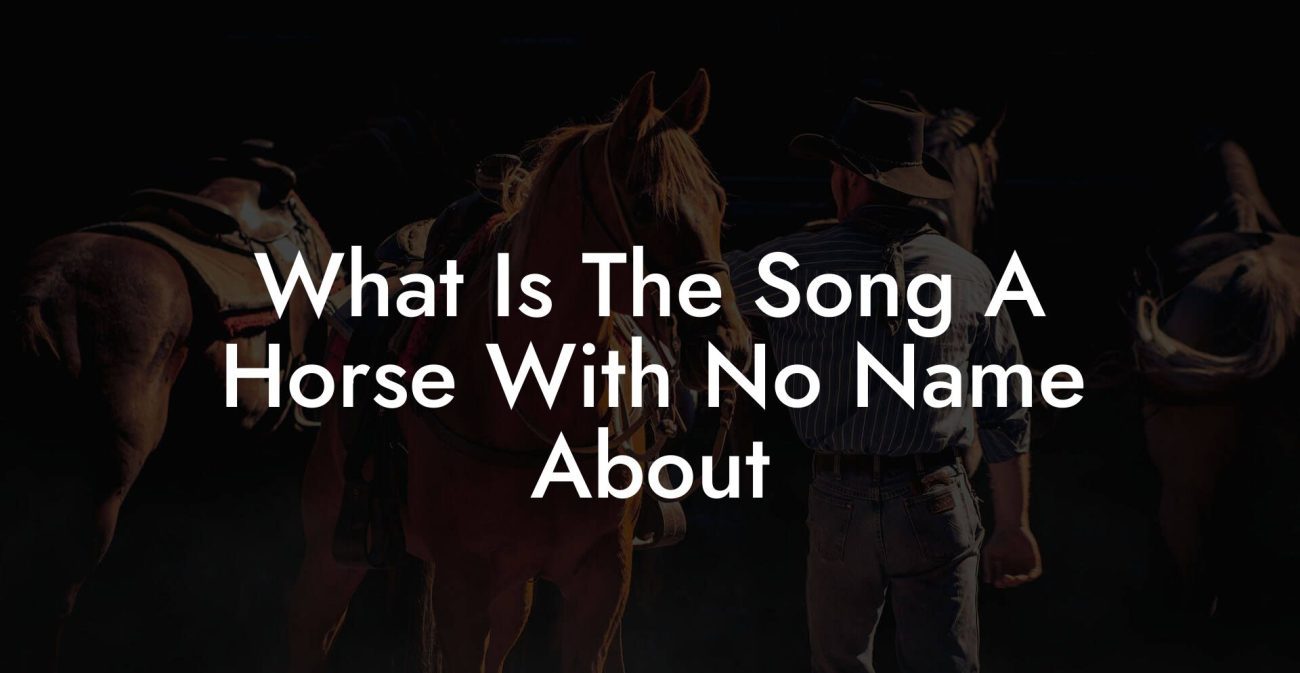Have you ever wondered if your equine friend can throw a spontaneous breeding party any time of the year, or if they strictly follow a seasonal playlist? Dive into the captivating world of horse reproduction as we explore whether horses can breed year-round, how nature and modern management play a role, and what this means for everyone from seasoned breeders to Gen-Z equine enthusiasts looking to care for their four-legged family members.
Quick Links to Useful Sections
- The Fascinating World of Equine Reproduction
- Understanding the Horse Reproductive Cycle
- Seasonal Breeding: Nature's Built-in Reproductive Rhythm
- Modern Management: Pushing the Boundaries of Natural Reproduction
- Can Horses Breed Year-Round? Debunking the Myths and Realities
- Environmental Influences on Equine Breeding Cycles
- Optimizing Breeding Management: Strategies for the Modern Horse Owner
- Navigating the Risks and Rewards of Out-of-Season Breeding
- Global Perspectives: How Geography Influences Breeding Patterns
- Integrating Science and Tradition: The Future of Equine Breeding
- Expert Tips for Equine Reproductive Care
- Resources and Community Support: Your Next Steps
- Frequently Asked Questions about Year-Round Equine Breeding
- Your Journey to Equine Reproductive Mastery
The Fascinating World of Equine Reproduction
Horses hold a special place in our hearts, and understanding their reproductive habits is just as captivating as watching them sprint across open pastures. The question “Do horses have the ability to breed year round?” draws us into an intricate tapestry of biology, environmental influences, and advanced breeding practices. In this comprehensive guide, we’ll break down horse breeding basics, from the natural cycles that define their fertility to the modern interventions that allow for controlled breeding beyond the usual seasons.
At its core, equine reproduction is a finely tuned process influenced by hormones, daylight, and a dash of Mother Nature’s magic. While you might be tempted to think horses are as unpredictable as your favorite meme, the truth is that their biological systems operate in surprisingly methodical ways. Whether you’re a millennial rider or a Gen-Z animal lover, knowing the science behind horse reproduction can deepen your appreciation for these majestic creatures and help you care for them better.
This guide isn’t just for the experts, it’s for anyone curious about the jungle of terms like “estrous cycle,” “photoperiod,” and “ovulation synchronization.” We promise to keep things entertaining, informative, and sprinkled with a bit of humor along the way. So, saddle up as we trot through the ins and outs of equine breeding, and discover whether horses really can go into heat in any season or if nature sets certain “must-follow” dates on their calendars.
Understanding the Horse Reproductive Cycle
Before exploring the possibility of year-round breeding, it’s essential to understand the basics of the horse reproductive cycle. Horses are known as seasonal breeders, meaning that mare fertility is typically influenced by changes in daylight hours and natural cycles. In most cases, this means mares come into heat during the spring and summer months, a period that offers optimal conditions for foal survival due to warmer temperatures and abundant pasture.
The mare’s estrous cycle averages around 21 to 23 days, with the estrus phase (when she is receptive to the stallion) lasting from 5 to 7 days. Hormones like estrogen and progesterone orchestrate this cycle, with the increasing daylight during spring acting as a key trigger for turning on the reproductive system. This is where the magic of the photoperiod comes in, a natural phenomenon that signals mares to start preparing for conception as the days get longer.
Stallions, on the other hoof, don’t have a seasonal breeding restriction like mares do. They are physiologically capable of breeding nearly year round, granted that they’re maintained in optimal health and nutrition. However, even stallions experience variations in libido and sperm quality depending on the season, though these fluctuations aren’t as strict or pronounced as in mares.
It’s worth noting that not all horse breeds follow this seasonal trend in the same way. Some tropical breeds and horses kept under stabling conditions with controlled lighting can exhibit reproductive activity outside the natural season. This opens doors to fascinating breeding management strategies and highlights how modern techniques blend with traditional practices.
Seasonal Breeding: Nature's Built-in Reproductive Rhythm
The concept of seasonal breeding might seem limiting at first glance, but there’s method in this natural rhythm. For centuries, horses have evolved to reproduce during times that maximize foal survival. Spring and early summer offer abundant resources and mild weather conditions essential for the vulnerable newborn foal. This synchronization between environmental cues and reproductive cycles ensures that the next generation starts life during a period when food, shelter, and favorable weather converge.
If you’ve ever observed a herd of wild horses, you might notice subtle behaviors that indicate the onset of the breeding season. Mares in heat display specific signals such as restlessness or increased urination, while stallions become more aggressive and competitive as they vie for mates. This natural timing isn’t arbitrary; it’s a testament to the evolutionary advantage of aligning reproduction with the best possible conditions.
When drawn into the conversation of whether horses can breed year round, it’s essential to understand that the traditional breeding period functions as a built-in safeguard. Breeding outside the ideal window could lead to health complications for the mare or reduced viability of the foal. As much as many horse owners wish for flexibility, nature has its own calendar installed, ensuring that all biological systems work in harmony.
Modern Management: Pushing the Boundaries of Natural Reproduction
Despite the inherent seasonal nature of horse breeding, advancements in management and reproductive technologies have allowed breeders to tweak the system. Today, through methods such as light manipulation, hormone treatments, and assisted reproductive technologies (ART), it’s possible to influence the mare’s cycle and sometimes extend the breeding season.
For instance, controlled exposure to artificial light can simulate the longer days of spring, tricking a mare’s internal clock into initiating estrus earlier or later than would naturally occur. This method, though requiring precision and careful management, has become a valuable tool for breeders looking to manage their stock’s reproduction more flexibly. Meanwhile, hormone therapies allow veterinarians and reproductive specialists to regulate the estrous cycle with medications that either stimulate or delay ovulation.
Assisted reproductive technologies such as artificial insemination (AI) and embryo transfer have also contributed to the conversation about year-round breeding. AI allows for genetic material to be collected, stored, and used at a time that best suits both the mare and the breeder’s schedule. Embryo transfer, on the other hand, lets a valuable mare produce multiple offspring in a single breeding year by implanting her embryo into a surrogate. These methods not only enhance breeding efficiency but also broaden the horizons of when and how horses can reproduce.
However, it’s important to recognize that while these advancements provide more control, they don’t inherently change the fact that horses , especially mares , are still influenced by their natural biology. Even with technological intervention, the success of these methods often hinges on maintaining a balance between respecting natural cycles and implementing modern practices.
Can Horses Breed Year-Round? Debunking the Myths and Realities
When you ask, “Do horses have the ability to breed year round?” the answer isn’t a simple yes or no. Traditional wisdom and natural evolutionary design dictate that horses are predominantly seasonal breeders. This means that without human intervention, most mares will enter estrus during the warmer months. The influence of increasing daylight is too significant to ignore.
But what if you’re trying to plan for a foal showcase at your local equestrian event outside the normal breeding window, or if you simply want the flexibility to manage your herd’s reproduction on your own terms? This is where modern equine reproductive science comes in. With the right techniques, horses can indeed be induced to breed outside the natural season, but at a cost. The cost isn’t just monetary; it’s also about respecting the delicate balance of equine biology.
It all boils down to a few key considerations:
- Health and Stress: Breeding out-of-season can place additional stress on a mare’s body. Ensuring optimal nutrition, managing stress, and providing regular veterinary care are essential to avoid compromising the mare’s health.
- Hormonal Treatments: The use of hormones to manipulate the estrous cycle, while effective, requires expert oversight. Excessive hormone use may lead to unintended side effects or long-term reproductive challenges.
- Management and Timing: It’s not just about inducing a cycle, it’s also about timing. Even with advanced methods, there is a fine art to predicting and managing the exact window when the mare is receptive to breeding.
- Ethical Considerations: Breeding year-round may be feasible, but many equine professionals advocate for respecting natural cycles. A foal born prematurely or out of season may face additional challenges, so ethical breeding practices are paramount.
In short, while technological and managerial techniques have made year-round breeding possible to some extent, it requires a comprehensive, carefully managed approach. If you’re considering this path, it’s crucial to collaborate with equine reproductive specialists who can navigate the complexities of hormonal balance, timing, and overall health.
Environmental Influences on Equine Breeding Cycles
The environment plays a starring role in determining when and how horses breed. From the quality of pasture to the length of daylight hours, a variety of external factors have a significant impact on the reproductive cycle.
Daylight and Photoperiod: The most influential factor is the photoperiod, or the amount of daylight received daily. In nature, increasing daylight in early spring triggers a cascade of hormonal changes in mares, signaling that conditions are favorable for breeding. This natural setting ensures that foals are born during a time when weather conditions and available resources are at their peak.
Climate and Seasonal Variations: Regions with dramatic seasonal differences tend to see more pronounced breeding seasons. In temperate climates, the shift from winter to spring is stark, and the corresponding change in temperature and pasture quality reinforces the biological need to reproduce during a limited window. Conversely, in tropical regions where daylight and weather conditions remain relatively constant throughout the year, some horses may exhibit less pronounced seasonal breeding behaviors.
Nutrition and Forage Availability: Adequate nutrition is essential for both the mare and the developing foal. As pastures come into full bloom in the spring and summer, the nutritional benefits not only support the mare’s recovery after giving birth but also provide the necessary sustenance for the newborn foal. This natural abundance is one of the reasons why the breeding season is so closely tied to the environment.
Stress and Social Dynamics: In herds of wild horses, social hierarchies and environmental pressures can also influence reproductive behavior. Stallions often engage in fierce competition for access to mares, a behavior that intensifies during the peak breeding season. For domesticated horses, stressors such as confinement, lack of social interaction, and environmental limitations can upset the natural hormonal balance, potentially disrupting the cycle.
For those managing their own stables or farms, understanding these environmental factors is key. It means optimizing your horse’s surroundings, by maximizing exposure to natural light when possible, ensuring ample nutrition from high-quality forage, and creating a low-stress environment that mimics the free-roaming conditions of wild herds. By aligning management practices with natural rhythms, you can support the health and well-being of your horses while navigating the complexities of seasonality.
Optimizing Breeding Management: Strategies for the Modern Horse Owner
For those ready to embark on the sophisticated journey of equine reproduction management, there are several strategies that blend traditional wisdom with modern innovation.
Controlled Lighting: One of the most effective techniques to influence the estrous cycle is through controlled lighting. By simulating longer days in winter, breeders can prompt hormonal changes in mares, essentially “tricking” them into believing it’s the breeding season. This method requires careful planning and a controlled environment, but it can extend the window of fertility and offer flexibility in planning mating schedules.
Hormone Therapy and Medication: Modern veterinary medicine offers a suite of hormonal treatments designed to regulate the mare’s estrous cycle. Medications can be used to induce ovulation, lengthen the estrus phase, or even synchronize cycles between mares. While these interventions are powerful, they demand close supervision and a nuanced understanding of equine endocrinology.
Assisted Reproductive Technologies (ART): Devices like artificial insemination and embryo transfer have revolutionized equine breeding. Artificial insemination (AI) enables the collection, storage, and transfer of stallion semen, even beyond the natural breeding window. Meanwhile, embryo transfer allows breeders to maximize the reproductive potential of valuable mares by implanting embryos into surrogates. These technologies not only expand breeding opportunities but also support genetic diversity and the preservation of prized bloodlines.
Nutritional and Health Monitoring: A healthy mare is a fertile mare. Ensuring that your horse receives a balanced diet rich in antioxidants, vitamins, and minerals is essential. Regular veterinary check-ups, vaccinations, deworming, and overall health monitoring keep the reproductive system in prime condition. The increased focus on holistic and integrative approaches in equine care means many modern owners are employing practices that range from tailored diets to mindfulness and stress reduction.
Data-Driven Management: Today’s technology offers digital tools and applications that help track reproductive cycles, manage breeding schedules, and record vital statistics. These apps and software solutions allow for precise record-keeping and better communication with veterinary professionals, ensuring that every breeding opportunity is optimized for success.
With these strategies, modern horse owners and breeders can work within, and sometimes even around, the traditional constraints of equine reproduction. The goal isn’t to defy nature, but rather to work harmoniously with it while embracing new methods that ensure the health, safety, and genetic prosperity of our equine companions.
Navigating the Risks and Rewards of Out-of-Season Breeding
While the idea of an all-year-round breeding program might initially spark excitement, it’s important to weigh the inherent risks against the potential rewards. Out-of-season breeding requires a deep understanding of both the benefits and the challenges.
The Rewards:
- Flexibility and Planning: For many breeders, the ability to control timing means more predictable foal crops, potentially matching market demands or specific show schedules.
- Genetic Advancement: A longer breeding period can lead to more opportunities to introduce superior genetics into a herd. It allows for quicker turnover and the possibility of enhancing bloodlines.
- Economic Benefits: With controlled breeding seasons, farms can plan and streamline operations, leading to more consistent incomes and better resource allocation.
The Risks:
- Health Implications: Forcing a mare to breed outside her natural cycle can lead to increased stress, which, in turn, might result in complications during gestation or a less viable foal. The mare’s body is working overtime, and if not managed correctly, this could translate to long-term reproductive issues.
- Hormonal Imbalances: Aggressive hormone treatments to manipulate cycles can sometimes lead to secondary health issues. Breeders must continuously monitor hormone levels to avoid adverse effects.
- Ethical Considerations: There is a growing debate about how far we should intervene in natural processes. Many enthusiasts and animal welfare advocates contend that excessive manipulation of the natural cycling process may compromise the well-being of the horse.
- Financial Investment: Advanced reproductive technologies and specialized veterinary care are not cheap. Out-of-season breeding often requires intensive management and state-of-the-art interventions that can increase the overall cost of horse care.
Ultimately, while out-of-season breeding offers a host of opportunities, it must be approached with caution and a solid understanding of equine physiology. It’s a balancing act between leveraging modern technology and respecting the natural instincts and rhythms of horses.
Global Perspectives: How Geography Influences Breeding Patterns
Horses aren’t one-size-fits-all when it comes to reproduction, their breeding patterns vary significantly across different regions of the world. In northern climates with distinct seasons, the natural breeding rhythm remains tight, with the majority of foals being born in the spring and early summer. In contrast, horses in subtropical or tropical areas may not experience the same degree of seasonality due to relatively consistent day lengths and mild temperatures.
This geographical variation has influenced breeding practices globally. Breeders in countries with pronounced seasonal changes often adhere closely to nature’s timetable, while those in regions with more constant climates may have greater flexibility. The rise of international equine competitions and breeding programs has also led to the exchange of genetic material across borders, where advanced reproductive technologies help bridge the gap between natural cycles and commercial demands.
For the modern equine enthusiast, it’s useful to consider how local climate, available resources, and cultural practices inform breeding decisions. Whether you’re managing a small stable in a cool northern climate or tending to horses in a warmer region, understanding the interplay between geography and reproduction can enhance your ability to care for and breed your horses successfully.
Integrating Science and Tradition: The Future of Equine Breeding
The future of horse breeding is an exciting blend of age-old wisdom and revolutionary science. Traditional methods, which evolved over millennia, continue to provide a strong foundation, while contemporary technologies enhance our ability to work with natural processes. The result is a dynamic field that constantly evolves to meet the needs of breeders, owners, and animal care enthusiasts.
In recent years, research in equine reproductive biology has led to breakthroughs in understanding how stress, nutrition, and environmental factors contribute to overall fertility. Genomic studies are uncovering the genetic markers that dictate reproductive success, opening the door for more efficient and targeted breeding programs. With these advancements, we can expect a future where the integration of data analytics, personalized veterinary care, and controlled environmental modifications becomes the norm.
Moreover, as more young and tech-savvy horse owners take an active interest in breeding and caring for their animals, the field is seeing an influx of innovative ideas and strategies. This new generation is not afraid to blend cutting-edge technology with traditional techniques, ensuring that the horse breeding industry remains both ethically sound and forward-thinking.
As you navigate the uncertainties and opportunities of equine breeding, remember that every decision affects the well-being of not just the current generation, but also the legacy of these incredible animals. Whether you’re leaning toward natural methods or interested in the possibilities of year-round breeding with modern interventions, always prioritize the health, welfare, and ethical treatment of your horses.
Expert Tips for Equine Reproductive Care
Caring for horses involves more than just providing food and shelter, it’s about understanding their physiology, paying attention to subtle cues, and sometimes even thinking outside the barn, especially when it comes to reproduction. Here are some expert tips to help you navigate the sometimes murky waters of equine reproductive care:
- Monitor the Cycle: Get familiar with the signs of estrus in mares. Changes in behavior, physical appearance, and even body odor can be early indicators. Tools like cycle charts and apps can help you keep track.
- Work with Specialists: Whether you’re a seasoned breeder or a new horse owner, consult with equine reproductive specialists to develop a tailored breeding management plan. Regular veterinary check-ups can make all the difference.
- Invest in Quality Nutrition: Your horse’s diet has a significant impact on its reproductive performance. Incorporate fresh forage, balanced grains, and essential supplements to ensure optimal health year-round.
- Stress Management: Horses are sensitive creatures. Minimizing stress through environmental enrichment, regular social interaction with herd mates, and a calm handling approach can boost reproductive health.
- Stay Informed About Advances: Follow trusted equine blogs, join online forums, and attend training sessions to keep up with the latest reproductive technologies and management practices. Knowledge is power!
By embracing these practices, you can ensure that your equine companions receive the care they deserve, all while staying ahead of the curve in this fast-evolving field.
Resources and Community Support: Your Next Steps
As you continue your journey into the nuanced realm of horse breeding, remember that you’re not alone, there’s a vibrant community of breeders, veterinarians, and equine enthusiasts who share your passion and commitment. Here are some resources and community support systems to help you make informed decisions, refine your breeding strategies, and ensure the best care for your horses:
- Local Equine Associations: Join national and local equine societies where you can attend workshops, seminars, and networking events.
- Veterinary Colleges and Research Institutions: Many institutions offer continuing education programs focused on equine reproduction and advanced breeding techniques.
- Online Forums and Social Media Groups: Platforms like Facebook, Reddit, and specialized equine care forums are treasure troves of information where you can ask questions and share experiences.
- Professional Webinars and Livestreams: With the digital era in full swing, many experts now offer live sessions, Q&As, and webinars to help you stay updated on the latest trends in equine reproductive management.
- Reputable Blogs and Journals: Read articles from trusted sources that discuss both the science and the art of horse breeding. This will help you blend modern practices with traditional wisdom.
Whether you’re looking for advice on how to extend your breeding season ethically or curious about the latest technological advances in equine reproductive care, these resources act as a bridge between theory and practice. The more you learn, the better equipped you’ll be to care for your horses in a way that respects both their biology and well-being.
Frequently Asked Questions about Year-Round Equine Breeding
We’re bringing together some of the most common queries from both seasoned breeders and new horse owners curious about the intricacies of equine reproductive management. Read on to find your answers!
1. Can horses naturally breed year-round?
Most horses are seasonal breeders, with mares typically entering estrus in the spring and summer due to increased daylight. However, stallions can be active year-round, and some tropical breeds or those kept under controlled lighting conditions may not follow this strict seasonal pattern.
2. How does light manipulation extend the breeding season?
Artificial lighting simulates longer nights or days, tricking the mare’s biological clock into initiating or prolonging the estrous cycle. This controlled manipulation can help extend the breeding season, but it requires careful management and veterinary oversight.
3. What are the risks associated with out-of-season breeding?
Breeding outside the natural season can increase stress on the mare, potentially leading to reproductive complications. It may also necessitate the use of hormonal treatments, which can have side effects if not managed correctly. Health, ethical considerations, and potential financial costs should all be weighed.
4. Are assisted reproductive technologies safe for horses?
Yes, procedures like artificial insemination and embryo transfer have been refined over decades. When performed by experienced professionals and paired with comprehensive veterinary care, these technologies can be safe and effective methods to enhance genetic diversity and manage breeding schedules.
5. Is year-round breeding ethical?
Ethical considerations are paramount. While technology allows for year-round breeding, many experts recommend adhering to natural cycles to ensure optimal health and welfare for the mare and foal. Each case should be evaluated with an emphasis on animal well-being.
6. How do nutrition and management practices affect breeding success?
Adequate nutrition, stress management, and overall health care significantly influence reproductive success. A balanced diet, regular exercise, and a well-managed environment contribute to a positive outcome in both natural and manipulated breeding scenarios.
7. Can I adopt a mixed method approach for breeding?
Absolutely. Many modern breeders combine traditional knowledge with scientific advancements such as controlled lighting, hormone therapies, and assisted reproductive technologies, all while ensuring the horse’s overall health is prioritized.
Your Journey to Equine Reproductive Mastery
Whether you’re a long-time breeder, a new horse owner, or simply fascinated by the intricate mechanics of nature, understanding the reproductive cycles of horses equips you with the knowledge to make informed decisions. Embracing both the natural rhythms and modern innovations of equine reproduction lets you tailor your approach to ensure that every horse under your care is not only healthy but thriving.
The interplay between natural seasonality and modern reproductive management is a testament to how far we’ve come, and where we’re headed. From recognizing the natural cues that dictate a mare’s cycle to utilizing the latest technologies to extend breeding opportunities, this guide is your passport to achieving a harmonious balance between respect for nature and the demands of modern equine care.
Take this knowledge, share it with your community, and continue to explore the rapidly evolving landscape of equine reproduction. With passion, care, and a little help from science, you can chart a course that highlights the best of both worlds while ensuring that every foal born is a testament to human ingenuity and nature’s timeless wisdom.
Your journey to equine reproductive mastery isn’t just about breeding, it’s about nurturing life, respecting natural processes, and boldly exploring innovative pathways to care. Stay curious, stay informed, and most importantly, keep your heart in the stable.

